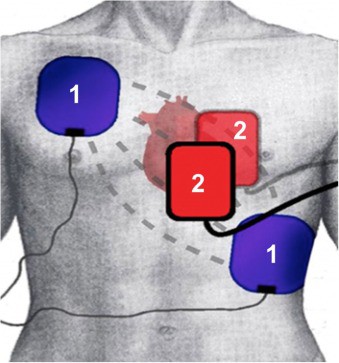
The first-of-its-kind study included 4,000 Ontario paramedics over four years
A new study funded by Heart & Stroke, and published in the New England Journal of Medicine (NEJM), suggests that using two defibrillators to deliver a sequential or “double” shock to the heart and switching standard pad positions by first responders could improve survival for those experiencing cardiac arrest.
Dr. Sheldon Cheskes, a Heart & Stroke funded researcher, and Professor of Emergency Medicine in the Department of Family and Community Medicine at the University of Toronto, and his team conducted the four-year trial across six paramedic services in Ontario, which included 4,000 paramedics. The study, presented at the American Heart Association Resuscitation Science Symposium - Late Breaking Trials, compared two novel techniques to standard care for patients receiving care from paramedics involved in the trial. All patients who remained in ventricular fibrillation (VF) after 3 shocks, using standard defibrillation techniques, continued to receive defibrillation using standard defibrillation techniques or one of the following strategies:
- One technique, double sequential external defibrillation (DSED), involved applying a second set of pads from a second defibrillator to the patient and sequentially shocking the patient using the two defibrillators.
- The second technique, vector change defibrillation (VC Defibrillation), involved changing the standard pad position known as anterior-lateral pad to anterior-posterior pads.
Remarkably, DSED was found to significantly improve both survival and neurological outcomes while vector change defibrillation improved survival when compared to the current standard of care. Survival to hospital discharge was 30.4% in the DSED group compared to 21.7% in the vector change group and 13.3% in the standard care group.These findings are most notable for first responders when standard methods of external defibrillation are ineffective.
“I am so proud of the paramedics who were trained and took part in the trial, as they clearly demonstrated that these new strategies could improve outcomes for these patients,” says Dr. Cheskes, who is also a scientist at St. Michael's Hospital, a site of Unity Health Toronto. “This trial has the potential to change practice around the world while saving the lives of patients sustaining refractory ventricular fibrillation.”
An estimated 35,000 out of hospital cardiac arrests happen each year in Canada. This means, on average, one cardiac arrest every 15 minutes. Cardiac arrest can strike anyone, anywhere, anytime, at any age, without warning.
Currently, 80% of cardiac arrests occur outside of a hospital setting and nine in ten of these people do not survive. Performing CPR and using AED on a person experiencing cardiac arrest can double their chance of survival.
“Heart & Stroke is proud to be funding such important research, a first-of-its kind in the world, right here in Canada,” says Diego Marchese, Executive Vice President, Research, at Heart & Stroke. “Dr. Cheskes’ findings are promising to improve methods for first responders who administer defibrillation and ultimately save more lives.”
SOURCE: Heart & Stroke Foundation of Canada
